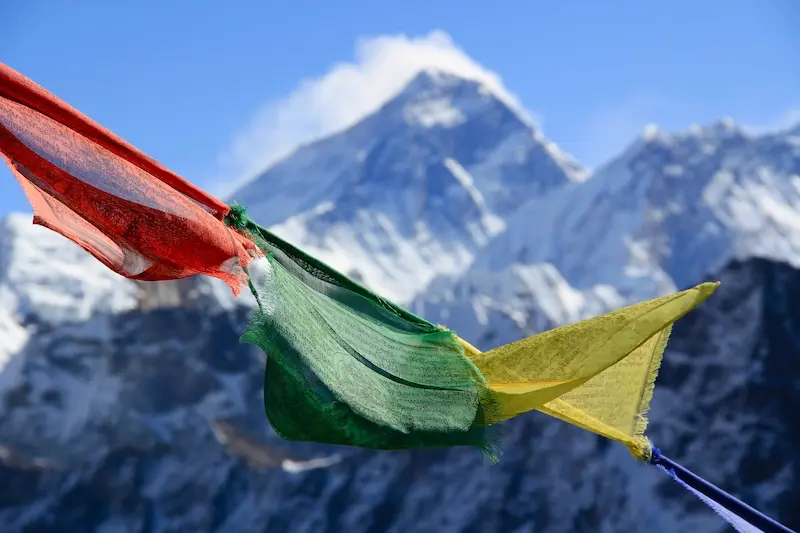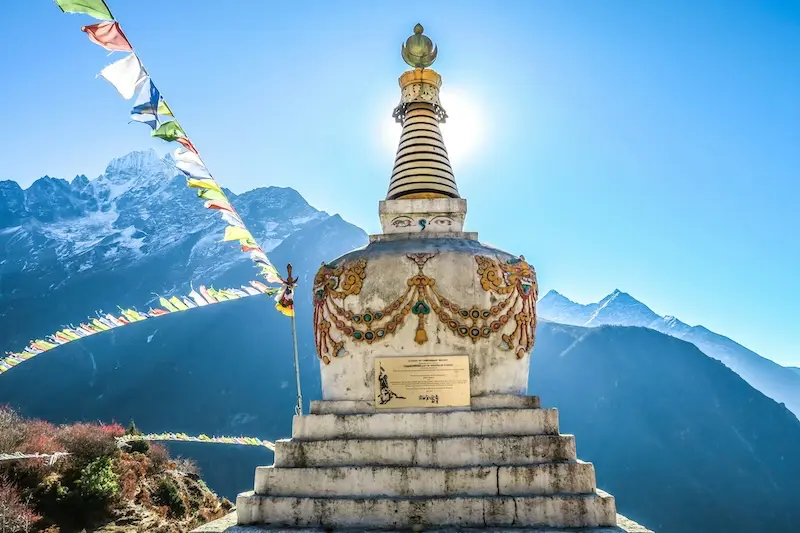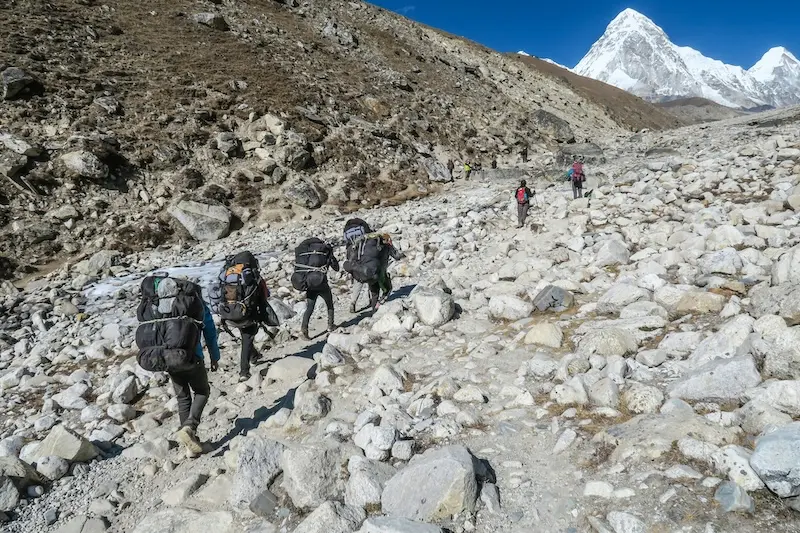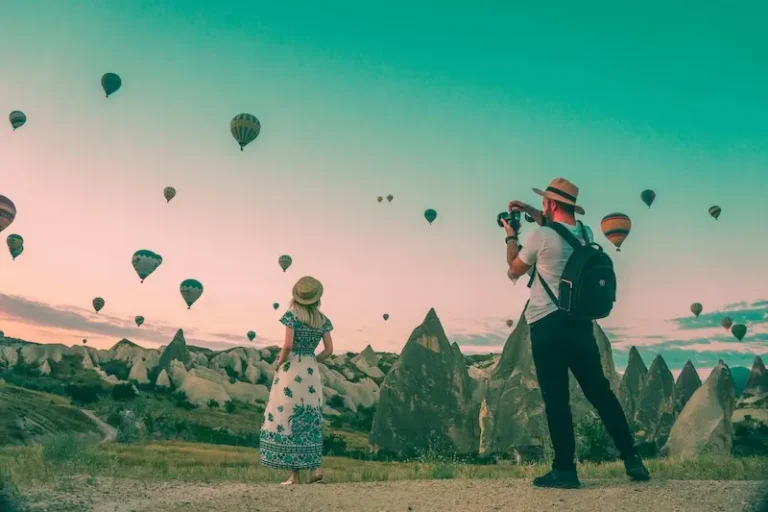5 TIPS FOR CLIMBING MOUNT EVEREST RESPONSIBLY

Climbing Mount Everest has long been heralded as the adventure of a lifetime. Reaching the world’s highest peak is a dream of mountaineer enthusiasts, with breathtaking summit views offering a priceless reward for months of training, endurance and determination.
But, with incredible adventure comes responsibility. Scaling this majestic Himalayan giant is no easy feat, and there are many important health and safety factors to consider before and during the ascent. Everest also has a delicate alpine ecosystem, home to native Sherpa communities and endangered species, both of which must be respected to support sustainable travel.
To help you explore Everest responsibly, we’ve created a guide with top tips and recommendations to keep you and the region safe. From acclimatization suggestions to packing essentials, we’ve got you covered.
Prepare and Train

Physical conditioning is crucial for building cardiovascular strength before you embark on your Everest adventure. Focus on aerobic exercise, like running or cycling, and strength training with weights to prepare your body for the demanding journey. Trekking through mountainous terrain with weighted backpacks is also a good idea to simulate the conditions on Everest.
Altitude sickness is a common occurrence and is caused by low oxygen levels. Before the trek, spend some time at higher altitudes to help your body acclimatise, and during the trip be sure to ascend gradually.
Technical mountaineering skills are useful for scaling Everest. Verse yourself in techniques such as ice climbing, and learn about how to use equipment effectively, such as ropes, crampons and ice axes.
Be Environmentally Conscious
When you venture to Everest, it’s important to follow the ‘leave no trace’ principle expected of all visitors. The alpine ecosystem is extremely delicate, with risks of soil erosion and pollution causing damage to plant and animal life. Ensuring that you don’t leave any waste when you set up camp is crucial for minimizing environmental impact.
Avoid using single-use plastics on your trek as they take a long time to degrade, and the microplastics can cause permanent ecological damage. Reusable water bottles and containers are ideal, and any non-biodegradable wrappers should be brought back from the trek and disposed of sufficiently.
Respecting wildlife is important to protect the unique species that live near Everest. If you see regional animals on your trek, like snow leopards, musk deer and Himalayan tahr, keep a safe distance, avoid feeding them, and move quietly to prevent distress.
Choose the Right Route

When you’re planning a trip to Everest, it’s important to choose a route that matches your abilities. duration, difficulty and altitude all vary depending on the route you take, so thoroughly research the different options to find one that suits you.
There are many routes available for varied skill levels, with Everest Base Camp being the most popular. This iconic trek takes visitors on a journey from the sparkling Dudh Khosi River, through Sherpa villages and stunning mountainous stretches. Opt for a Mount Everest base camp tour to learn about traditional Nepalese culture, see panoramic views and enjoy great acclimatisation opportunities.
Other routes include Gokyo lakes, with quiet scenic views and moderate terrain, and the channeling Three Passes Trek which is suited to more experienced trekkers. Whichever route you take, you can be sure to experience breathtaking Himalayan scenery and vibrant local culture.
Respect Local Culture
Supporting local communities is a great way to explore Everest responsibly. The Sherpa communities offer many valuable services for visitors, including professional guides, equipment transportation and expert knowledge of routes.
Showing respect towards Sherpa culture enhances your experience and builds positive relationships with locals. Gain insights from Sherpa guides about Nepalese customs and spiritual practices, and be mindful when visiting sacred sites.
Respecting local cultures is an important part of ethical tourism. This practice ensures the preservation of Nepalese traditions whilst offering visitors an educational opportunity for discovery and interaction during their Everest adventure.
Prioritise Health and Safety

The extreme conditions of Everest make any trek a challenging one, so prioritising health and safety is paramount. It is recommended to have a medical check before the climb, as well as any necessary vaccinations, to make sure your body is fit for the journey.
Watch out for symptoms of altitude sickness, including nausea, dizziness and shortness of breath. Ascend gradually and follow the ‘climb high, sleep low’ rule for the best acclimatisation opportunities, stay well hydrated and consider medication to relieve symptoms.
Follow experienced and certified guides to guarantee your safety. Read reviews and research a company’s safety protocols to ensure you’re led by the best in the field.
Summary
Mount Everest is a towering jewel of the Himalayas and scaling it is a challenging but incredibly rewarding feat. Reaching the summit and looking out across the expansive snow-capped landscape is an unforgettable once-in-a-lifetime experience.
Exploring Everest comes with great responsibility, and ensuring that you respect the local communities, the delicate environment and your health is crucial.
When you embark on your Everest adventure, be sure to follow the tips and tricks recommended in this guide for the best, ethically conscious journey possible.
Good luck and happy climbing!






